 W
WCarlos Manuel Arana Osorio was President of Guatemala from 1970 to 1974. His government enforced torture, disappearances and killings against political and military adversaries, as well as common criminals.
 W
WJuan Jacobo Árbenz Guzmán was a Guatemalan military officer and politician who served as the 25th President of Guatemala. He was Minister of National Defense from 1944 to 1951, and the second democratically elected President of Guatemala, from 1951 to 1954. He was a major figure in the ten-year Guatemalan Revolution, which represented some of the few years of representative democracy in Guatemalan history. The landmark program of agrarian reform Árbenz enacted as president was very influential across Latin America.
 W
WJuan José Arévalo Bermejo was a professor of philosophy who became Guatemala's first democratically elected president in 1945. He was elected following a popular uprising against the United States-backed dictator Jorge Ubico that began the Guatemalan Revolution. He remained in office until 1951, surviving 25 coup attempts. He did not contest the election of 1951, instead choosing to hand over power to Jacobo Árbenz. As president, he enacted several social reform policies, including an increase in the minimum wage and a series of literacy programs. He also oversaw the drafting of a new constitution in 1945.
 W
WMiguel Ángel Asturias Rosales was a Nobel Prize-winning Guatemalan poet-diplomat, novelist, playwright and journalist. Asturias helped establish Latin American literature's contribution to mainstream Western culture, and at the same time drew attention to the importance of indigenous cultures, especially those of his native Guatemala.
 W
WCarlos Castillo Armas was a Guatemalan military officer and politician who was the 28th president of Guatemala, serving from 1954 to 1957 after taking power in a coup d'état. A member of the right-wing National Liberation Movement (MLN) party, his authoritarian government was closely allied with the United States.
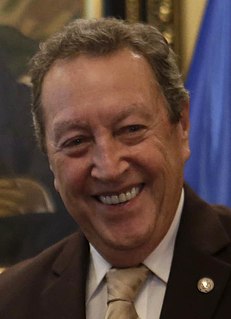 W
WMarco Vinicio Cerezo Arévalo is a Guatemalan politician. He served as President of Guatemala from January 14, 1986 to January 14, 1991.
 W
WLázaro Chacón González was the acting President of Guatemala from 26 September 1926 to 18 December 1926 and President of Guatemala from 19 December 1926 to 2 January 1931.
 W
WMaría Chinchilla Recinos, commonly known as María Chinchilla, was a Guatemalan schoolteacher who was assassinated by the cavalry of General Jorge Ubico while taking part in a peaceful anti-government demonstration. She is honoured as a national heroine.
 W
WÁlvaro Colom Caballeros is a Guatemalan politician who was the President of Guatemala from 2008 to 2012, as well as leader of the social-democratic National Unity of Hope (UNE).
 W
WManuel José Estrada Cabrera was President of Guatemala from 1898 to 1920. He was a lawyer with no military background and as President, he was a strong ruler, who modernised the country's industry and transport, but only by granting concessions to the American-owned United Fruit Company, whose influence on the government was felt by many to be excessive. Estrada Cabrera used increasingly brutal methods to assert his authority, including armed strike-breaking, and the general elections were effectively controlled by him. He retained power for 22 years through controlled elections in 1904, 1910, and 1916, and was eventually removed from office when the national assembly declared him mentally incompetent, and he was jailed for corruption.
 W
WJuan José Gerardi Conedera was a Guatemalan Roman Catholic bishop and human rights defender who was long active in working with the indigenous Mayan peoples of the country. In the 1970s he gained government recognition of indigenous languages as official languages, and helped secure permission for radio stations to broadcast in indigenous languages. In 1988 he was appointed to the government's National Reconciliation Commission to begin the process of accounting for abuses during the civil war.
 W
WLuis González Palma (1957) is a Guatemalan photographer. Much of his work "has revolved around the strange hybrids of race and culture that add up to Latin America."
 W
WFrank La Rue is a Guatemalan labor and human rights law expert and served as UN Special Rapporteur on the Promotion and Protection of the Right to Freedom of Opinion and Expression, from August 2008 to August 2014. Along with American Human Rights attorneys, Anna Gallagher and Wallie Mason, Mr. La Rue is the founder of the Center for Legal Action for Human Rights (CALDH) and has been involved in the promotion of human rights for over 25 years. He was nominated for the 2004 Nobel Peace Prize by Mairead Corrigan, Northern Irish peace activist and 1976 laureate. Mr La Rue was previously the Executive Director of Robert F. Kennedy Human Rights Europe. He currently serves as Assistant Director-General for Communication and Information at UNESCO.
 W
WDieter Lehnhoff Temme is a German-Guatemalan composer, conductor, and musicologist.
 W
WRamiro de León Carpio was the President of Guatemala from June 6, 1993 until January 14, 1996.
 W
WHermógenes López Coarchita was a Guatemalan Catholic Church priest. He served as the pastor for the San José de Pinula parish since the late 1960s until his murder in mid-1978 due to his consistent championing of human rights and in particular his demand that all Guatemalans have the basic right to access clean water. His constant speaking out against corruption and regime abuses led to his enemies planning to kill him in an effort to subdue potential rebellion in the region.
 W
WVirgilio Rodríguez Macal was a Guatemalan writer, journalist, and diplomat who won various international and national prizes. As a novelist he is noted for integrating his deep knowledge of Mesoamerican and Guatemalan history and geography into his stories, often setting his novels in colorful Guatemalan jungle settings including its biologically rich flora and fauna.
 W
WMyrna Mack Chang, born Sau Ha, was a Guatemalan anthropologist. In 1990 she was murdered by the Guatemalan military because of her criticism of the Guatemala government's treatment of the indigenous Maya, and its human rights abuses against the people.
 W
WManuel Antonio de Jesus Alvarado (1919-2011) was a musician, conductor and music educator born in Guatemala. He studied harmony, composing and conducting and graduated as a cellist from the Guatemala National Music Conservatoire and received a master's in musical education (?) from the Royal Manchester College of Music. In 1970 he founded the Guatemala Youth Symphony, which he led until its dissolution in 2000. He was awarded the Francisco Marroquin Order from the government of Guatemala for his lifelong dedication to music education.
 W
WJulio César Méndez Montenegro was the Revolutionary Party President of Guatemala from July 1, 1966 to July 1, 1970. Mendez was elected on a platform promising democratic reforms and the curtailment of military power. The only civilian to occupy Guatemala's presidency during the long period of military rule between 1954 and 1986. Mendez had assumed the presidency under a pact in July, 1966 that gave the armed forces carte blanche with respect to internal security matters and an effective veto over governmental policy. He was the first cousin of César Montenegro Paniagua whose kidnapping, torture and murder during the Julio César Méndez presidency is rumored to have been undertaken with presidential sanction.
 W
WJoaquín Méndez was a poet, journalist, politician, and a Guatemalan diplomat that work closely with President Manuel Estrada Cabrera throughout his career, which lasted from 1898 to 1920. He was the director of Tipografía Nacional de Guatemala, minister of promotion, editor of La Locomotora, and he was the Guatemalan ambassador to the United States government. He represented Guatemala and as representative he signed the Treaty of Versailles after the first world war.
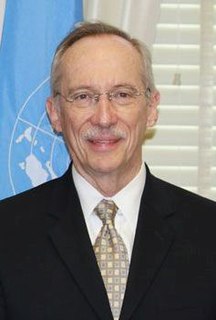 W
WEdmond Auguste Mulet Lesieur is a Guatemalan diplomat.
 W
WRodolfo Narciso Chavarría was a marimba player and composer from Guatemala.
 W
WMarcello Maruzzo – known in his religious order as Tullio – and Luis Navarro were Italian and Guatemalan respectively. Maruzzo was a professed priest from the Order of Friars Minor and Navarro was part of the Secular Franciscan Order. The two were missionaries in Guatemala dedicated to catechesis and evangelization among the local people.
 W
WJosé María Orellana Pinto was a political and military leader in Guatemala. He was chief of staff of President Manuel Estrada Cabrera and President of Guatemala between 1921 and 1926, after overthrowing Conservative Unionist President Carlos Herrera. During his rule the Quetzal was established as the currency of Guatemala. Orellana Pinto died under suspicious circumstances in 1926 at the age of fifty-four. He was buried in the Guatemalan capital with state honors.
 W
WGustavo Adolfo Palma was a Guatemalan singer, actor, and lyric tenor between 1936 and 1970, nicknamed "the Tenor of Central America" by Guatemalan radio personality José Flamenco y Cotero.
 W
WOtto Fernando Pérez Molina is a Guatemalan politician and retired military officer, who was President of Guatemala from 2012 to 2015. Standing as the Patriotic Party candidate, he lost the 2007 presidential election but prevailed in the 2011 presidential election. During the 1990s, before entering politics, he served as Director of Military Intelligence, Presidential Chief of Staff under President Ramiro de León Carpio, and as chief representative of the military for the Guatemalan Peace Accords. On being elected President, he called for the legalization of drugs.
 W
WAlfonso Antonio Portillo Cabrera is a Guatemalan politician who served as President of Guatemala from 2000 to 2004.
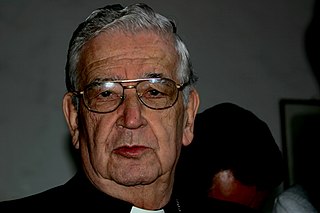 W
WRodolfo Ignacio Quezada Toruño was a Guatemalan cardinal of the Catholic Church. He was Archbishop of Guatemala City, having previously served as Bishop of Zacapa y Santo Cristo de Esquipulas from 1980 to 2001. He was elevated to the cardinalate in 2003.
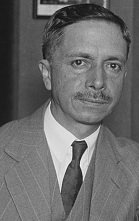 W
WAdrián Recinos (1886–1962) was a Guatemalan historian, essayist, Mayanist scholar and translator, and diplomat. Recinos was a great student of national history, mainly of the Maya civilization and the ancient history of the K'iche' and Kaqchikel people.
 W
WEfraín Enrique Recinos Valenzuela was a Guatemalan contemporary architect, muralist, urbanist, painter and sculptor.
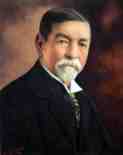 W
WJosé María Reina Andrade was the acting President of Guatemala from 2 January 1931 to 14 February 1931.
 W
WJosé Efraín Ríos Montt was a Guatemalan general, politician, and war criminal who served as President of Guatemala. Born in Huehuetenango, he was a dictator who took power as a result of a coup d'état on March 23, 1982. He was overthrown by his defense minister, Óscar Humberto Mejía Victores, in another coup d'état on August 8, 1983. In the 2003 presidential elections, Ríos Montt unsuccessfully ran as the candidate of the Guatemalan Republican Front (FRG). In 2007 he returned to public office as a member of Congress, thereby gaining prosecutorial immunity. He was protected from a pair of long-running lawsuits alleging war crimes against him and a number of his former ministers and counselors during their term in the presidential palace in 1982–83. His immunity ended on January 14, 2012, with the end of his term in legislative office. On January 26, 2012, he appeared in court in Guatemala and was formally indicted for genocide and crimes against humanity.
 W
WVirgilio Rodríguez Beteta (1885–1967) was a Guatemalan lawyer, historian, diplomat and writer.
 W
WJorge Antonio Serrano Elías was President of Guatemala from January 14, 1991 to June 1, 1993.
 W
WJorge Ubico Castañeda, nicknamed Number Five or also Central America's Napoleon, was a Guatemalan dictator. A general in the Guatemalan army, he was elected to the presidency in 1931, in an election where he was the only candidate. He continued his predecessors' policies of giving massive concessions to the United Fruit Company and wealthy landowners, as well as supporting their harsh labor practices. Ubico has been described as "one of the most oppressive tyrants Guatemala has ever known" who compared himself to Adolf Hitler. He was removed by a pro-democracy uprising in 1944, which led to the ten-year Guatemalan Revolution.
 W
WRafael Yela Günther was a Guatemalan painter and sculptor.